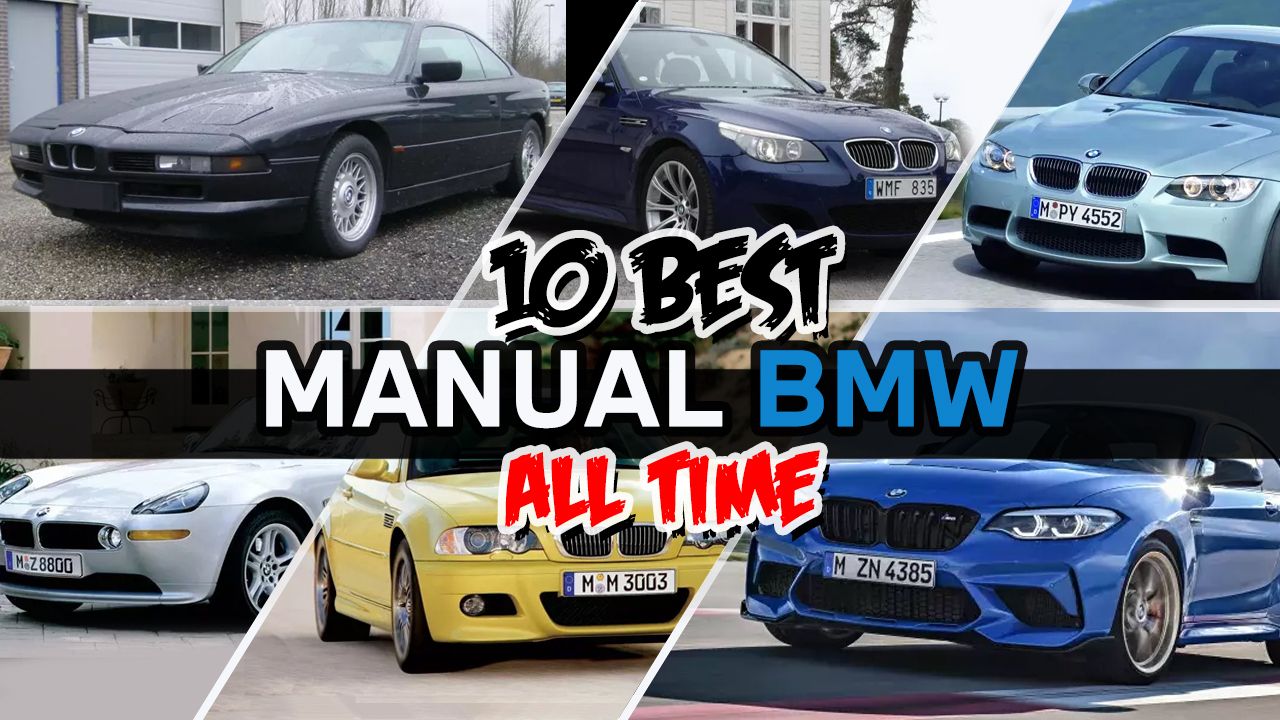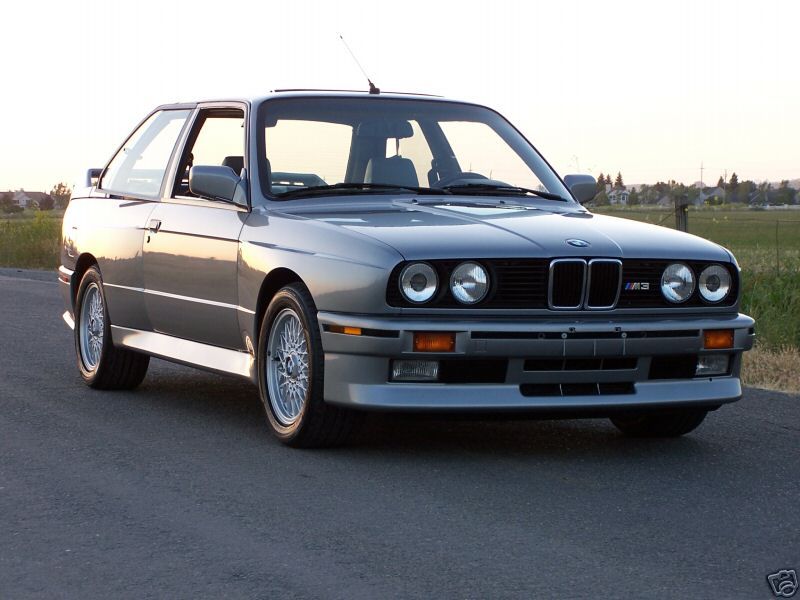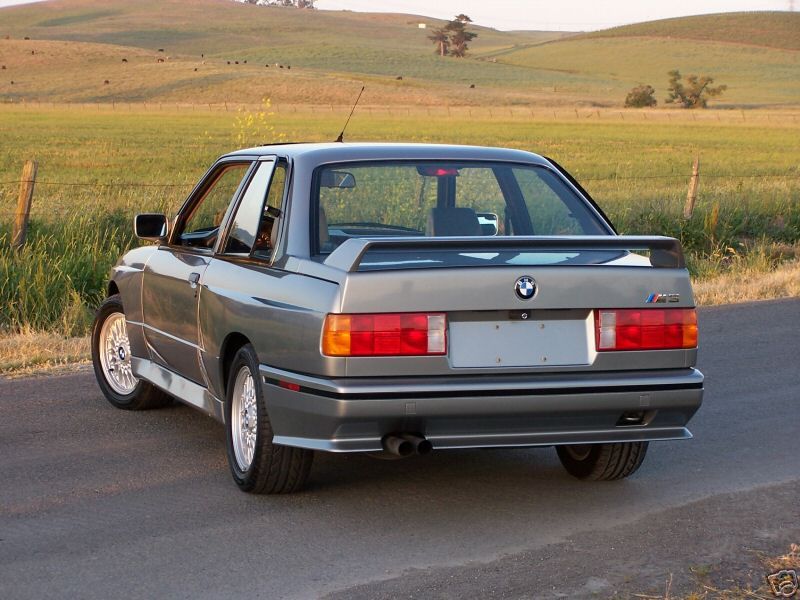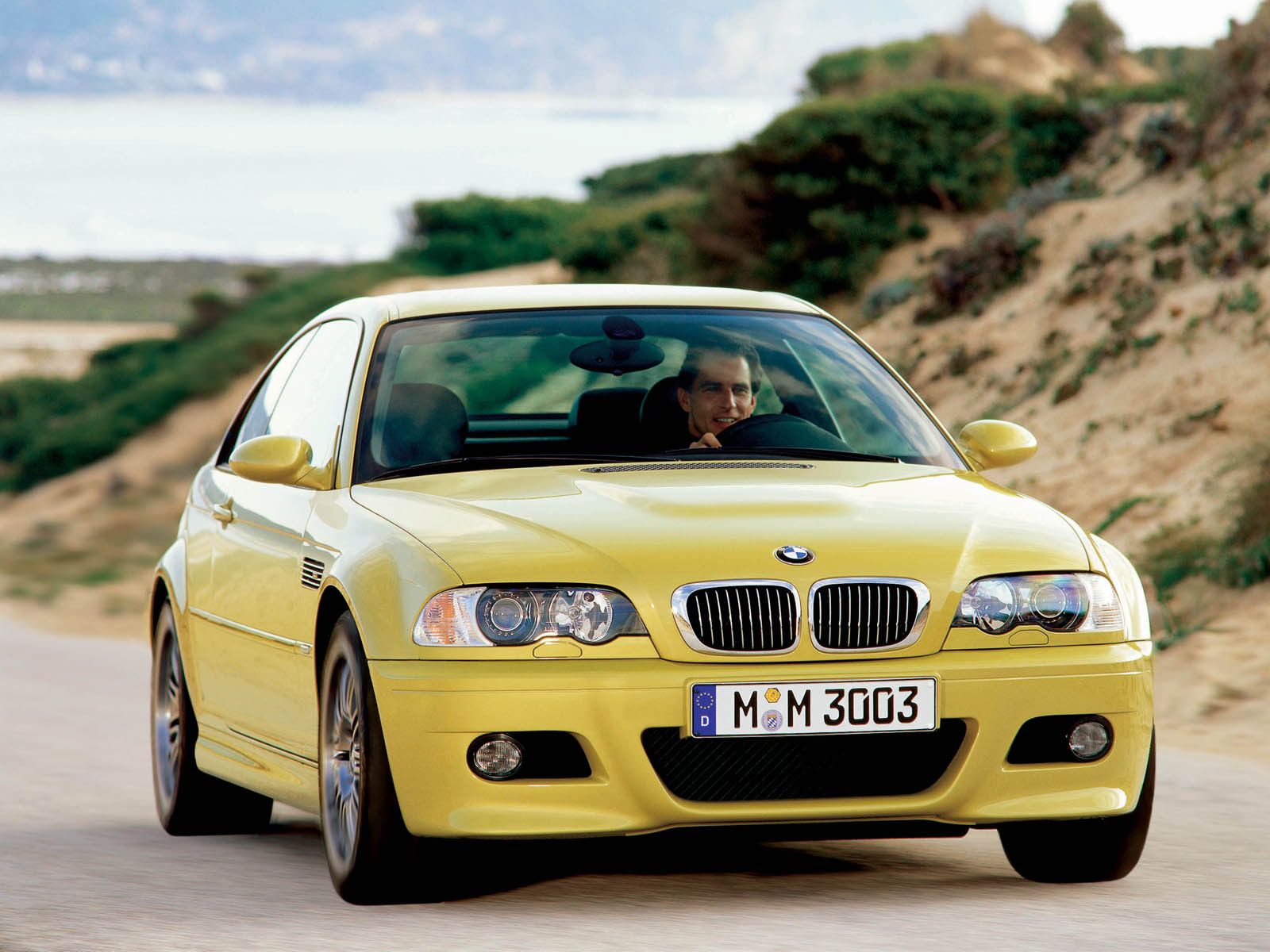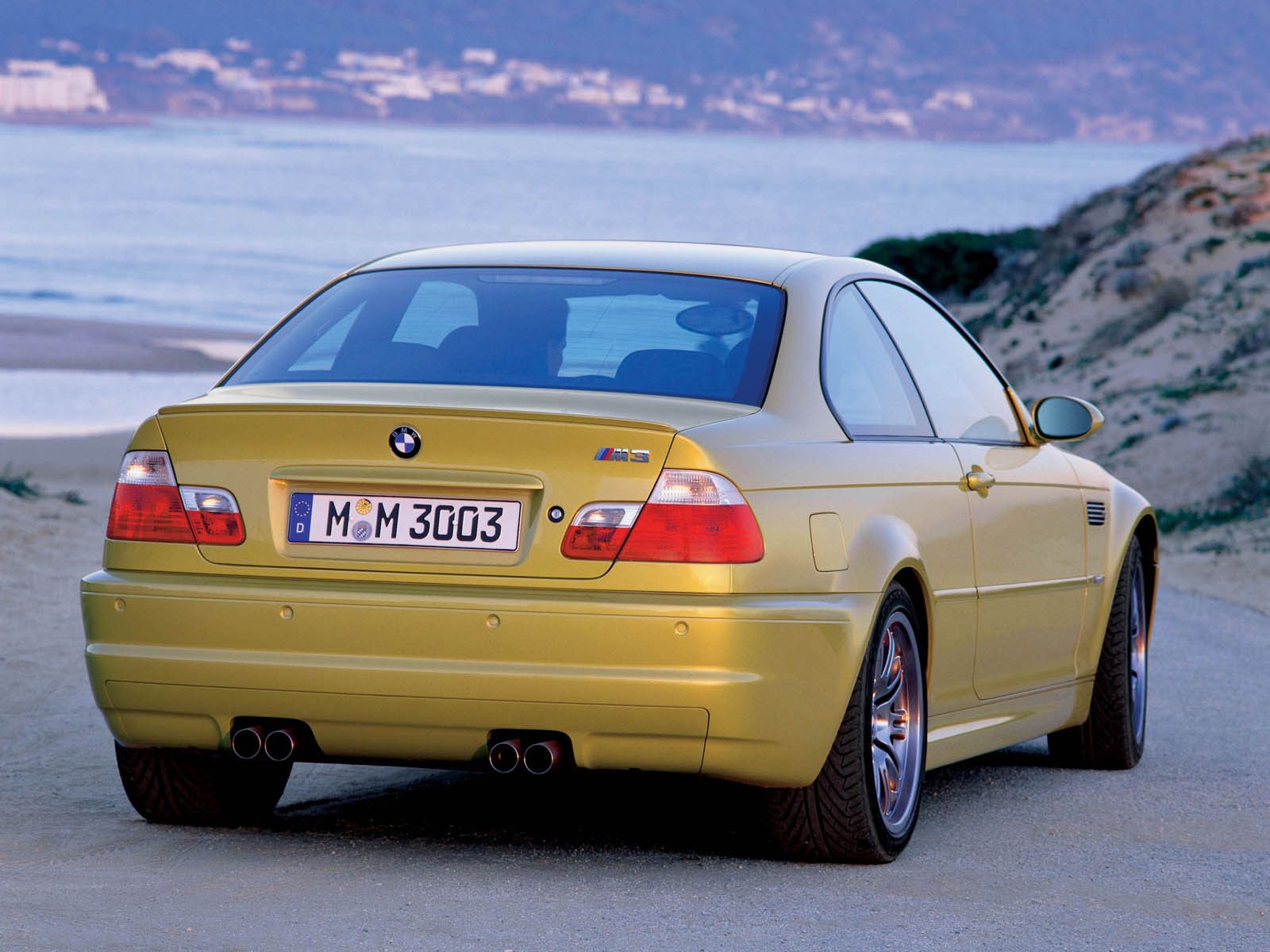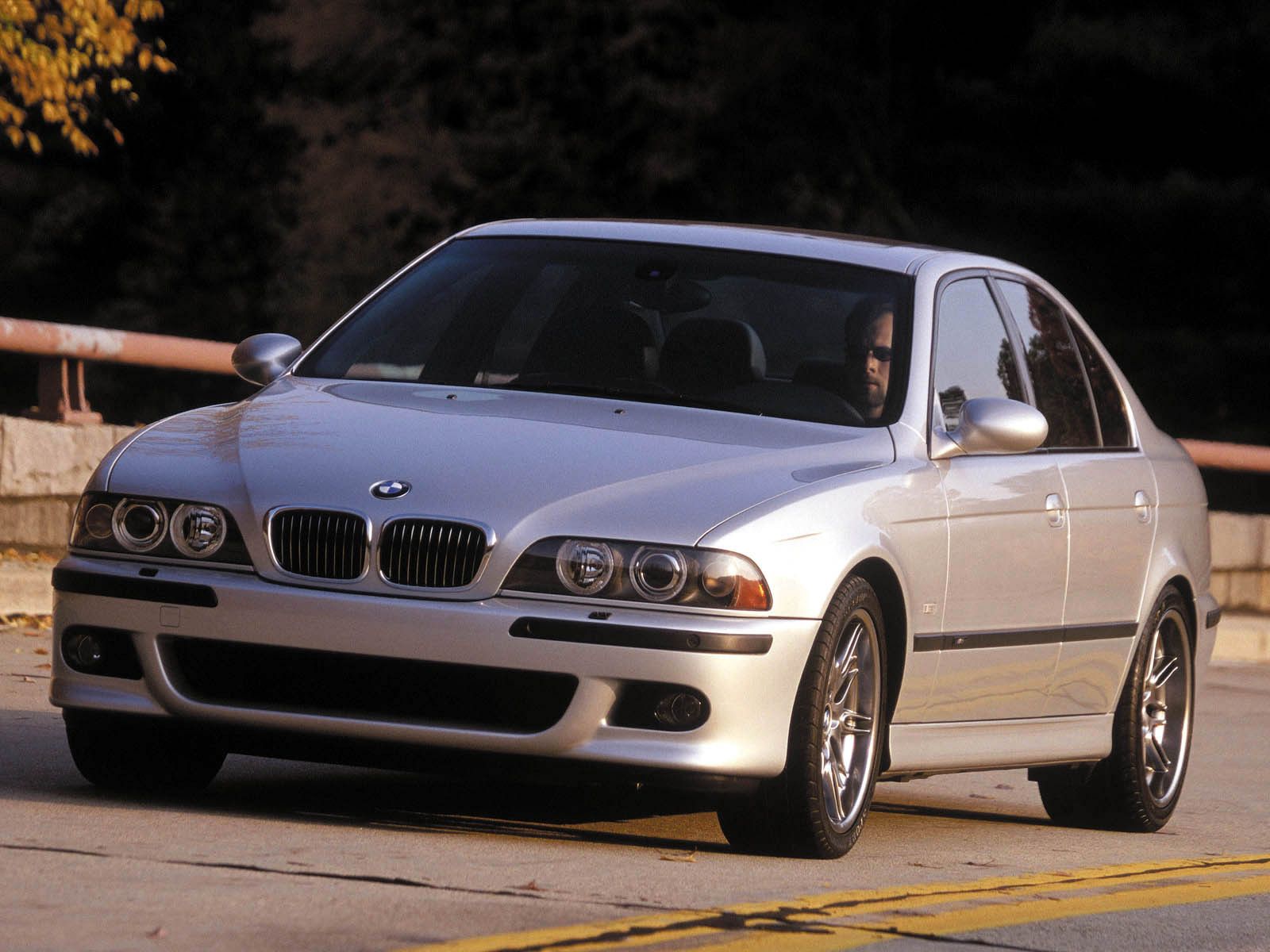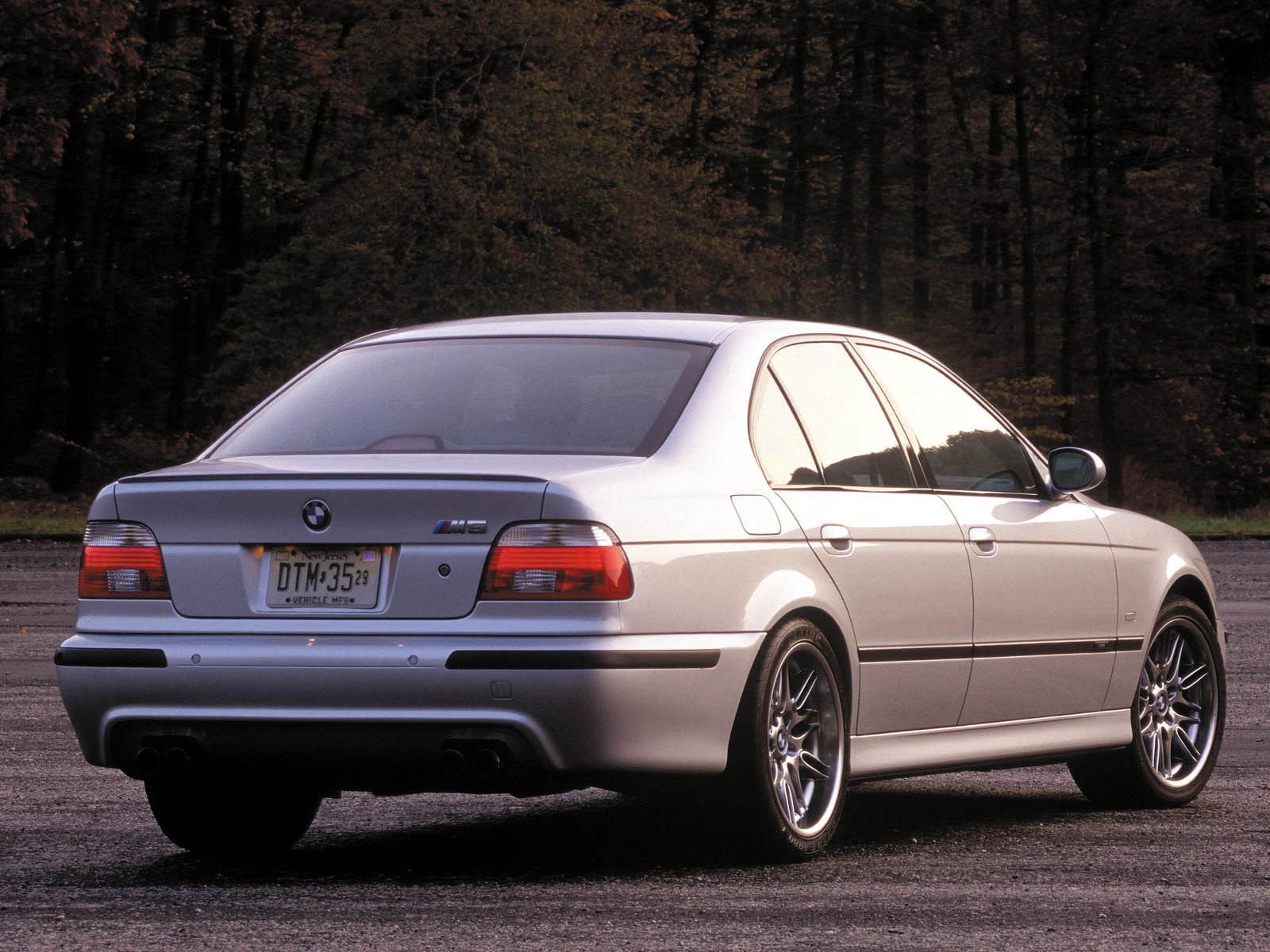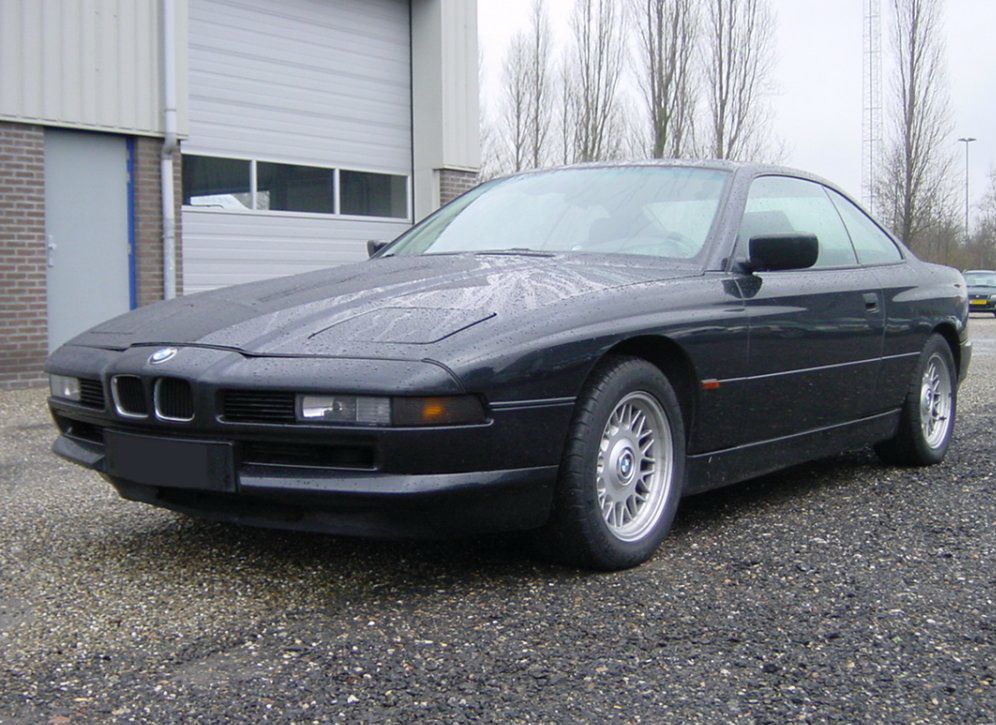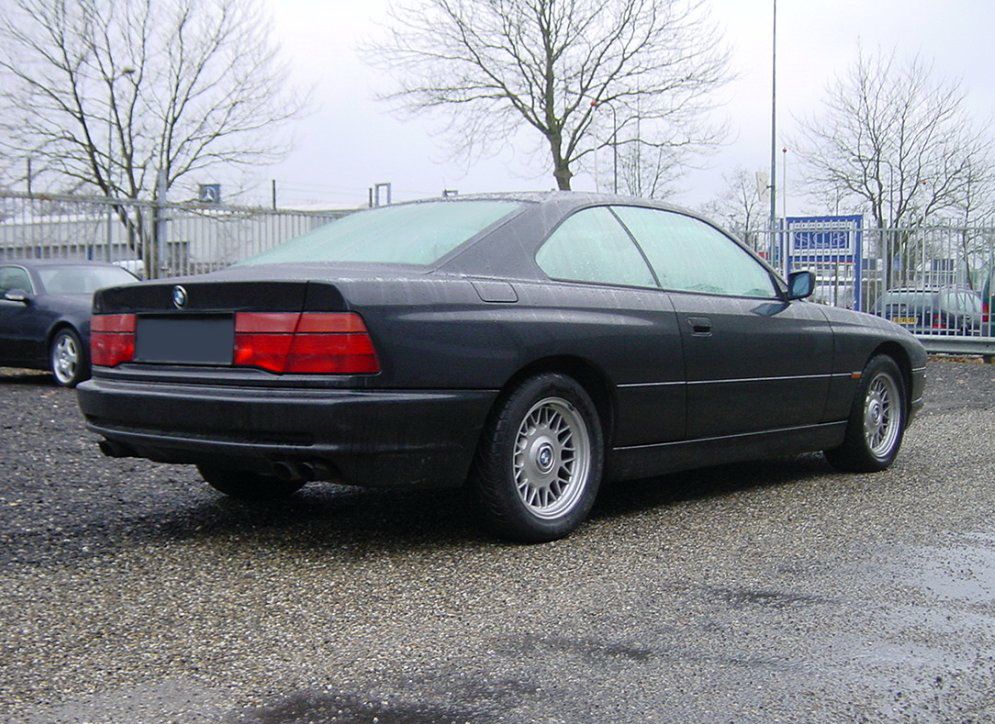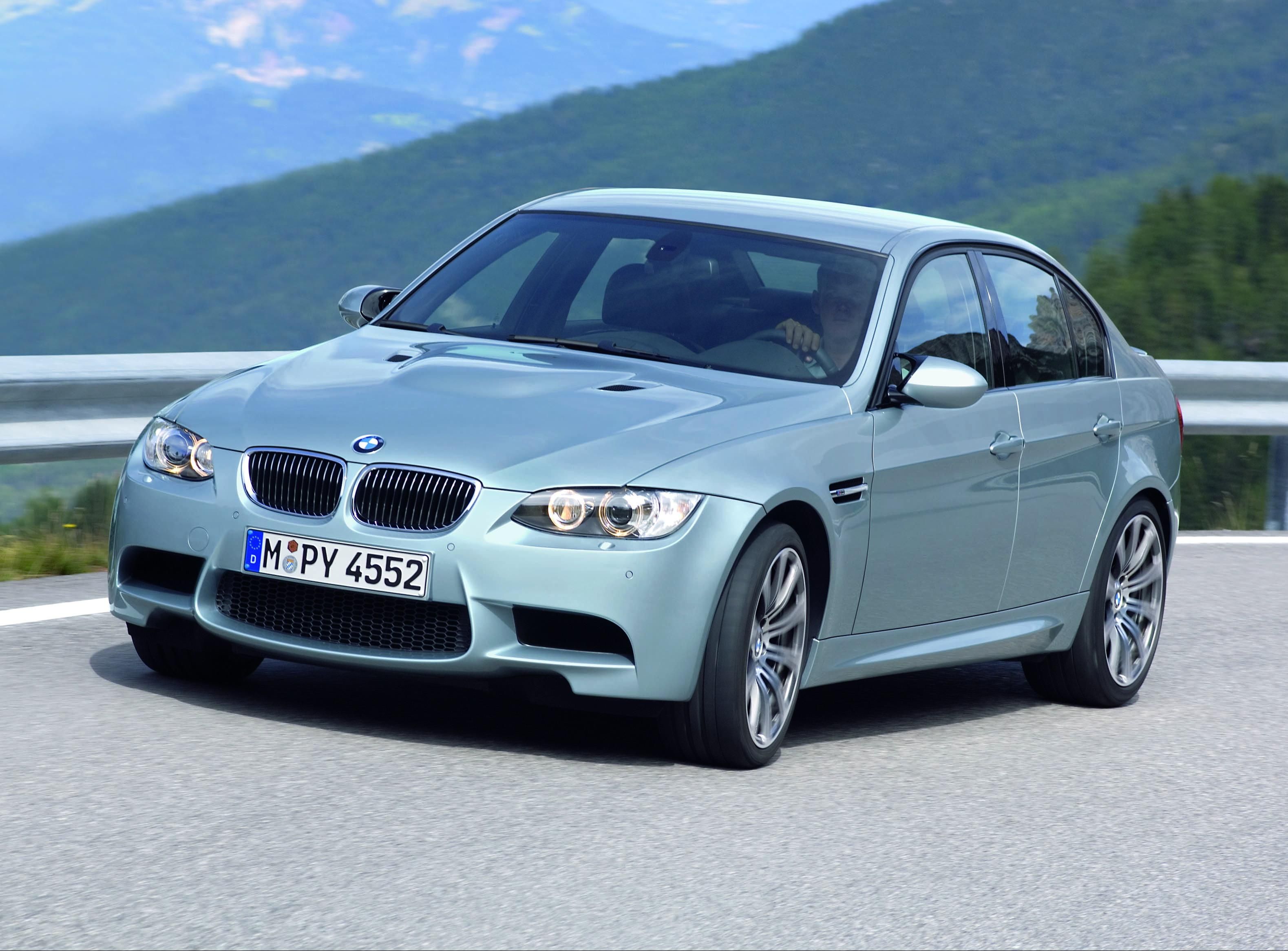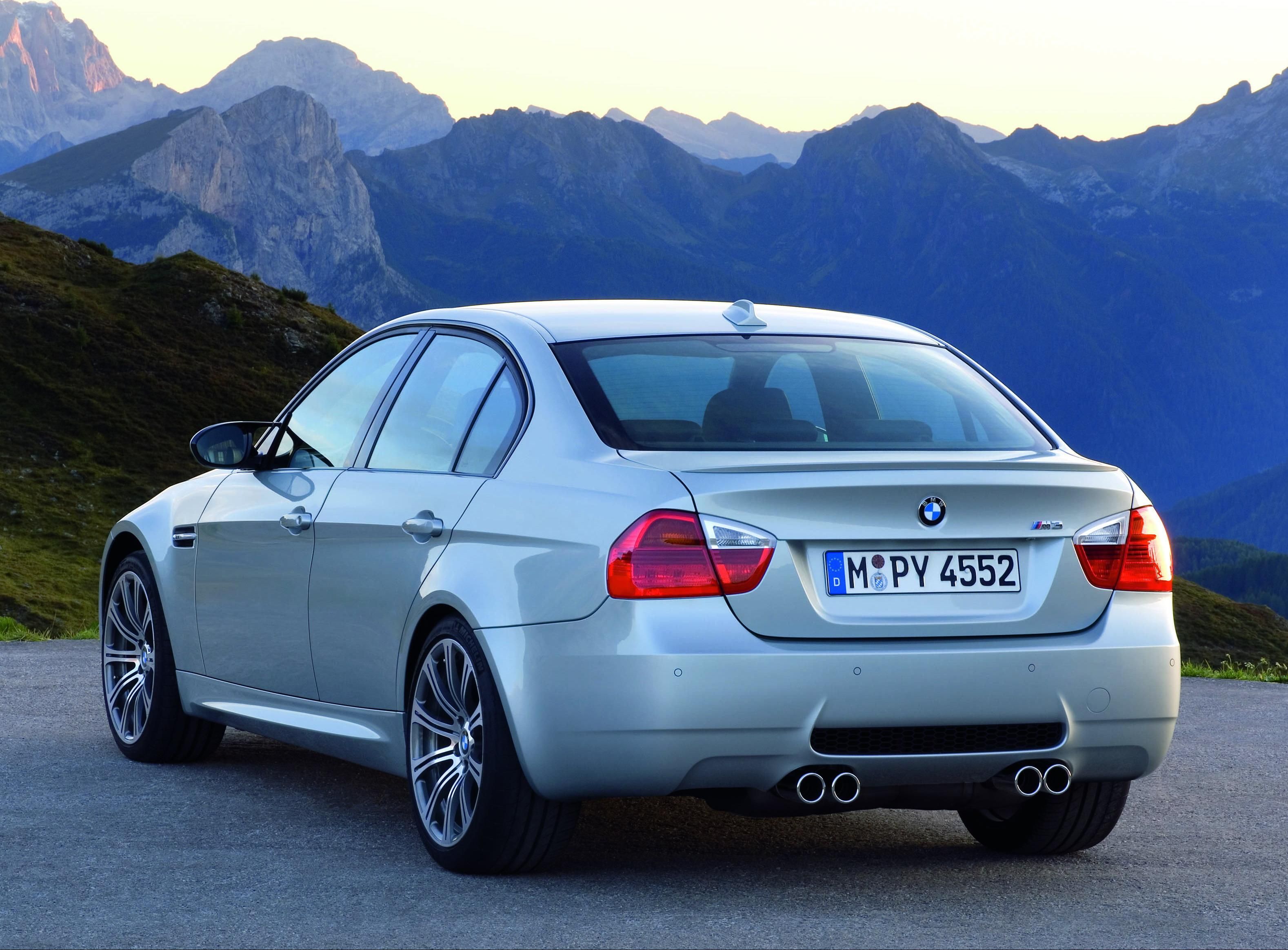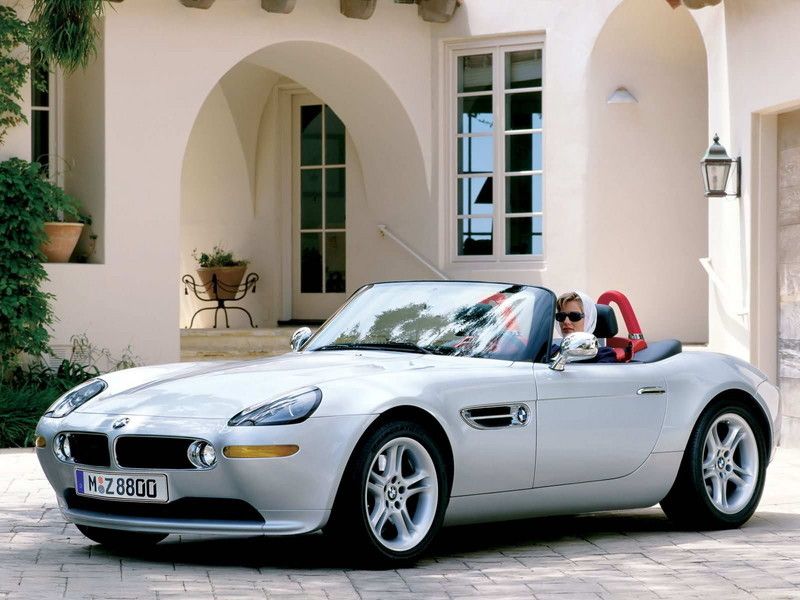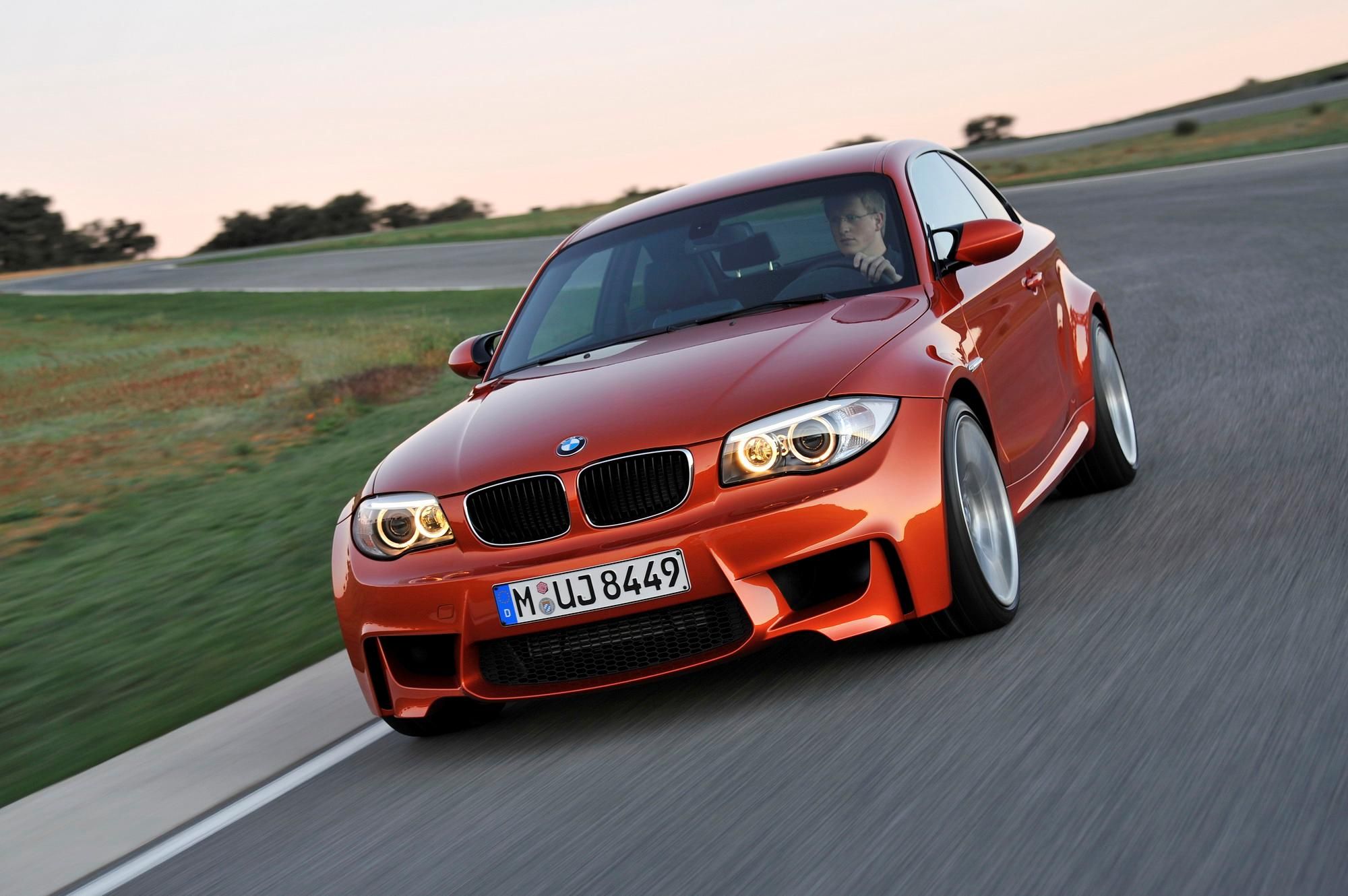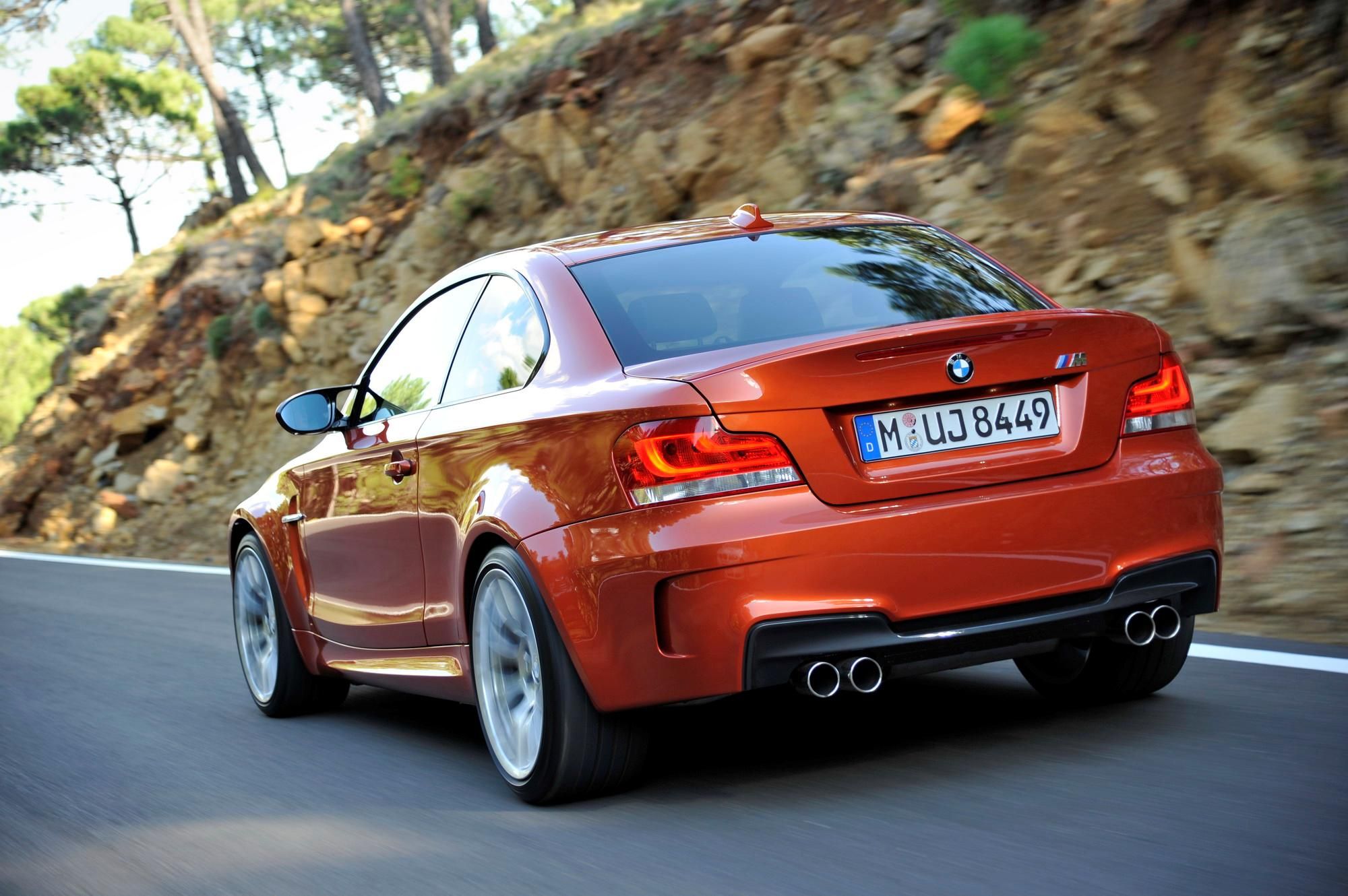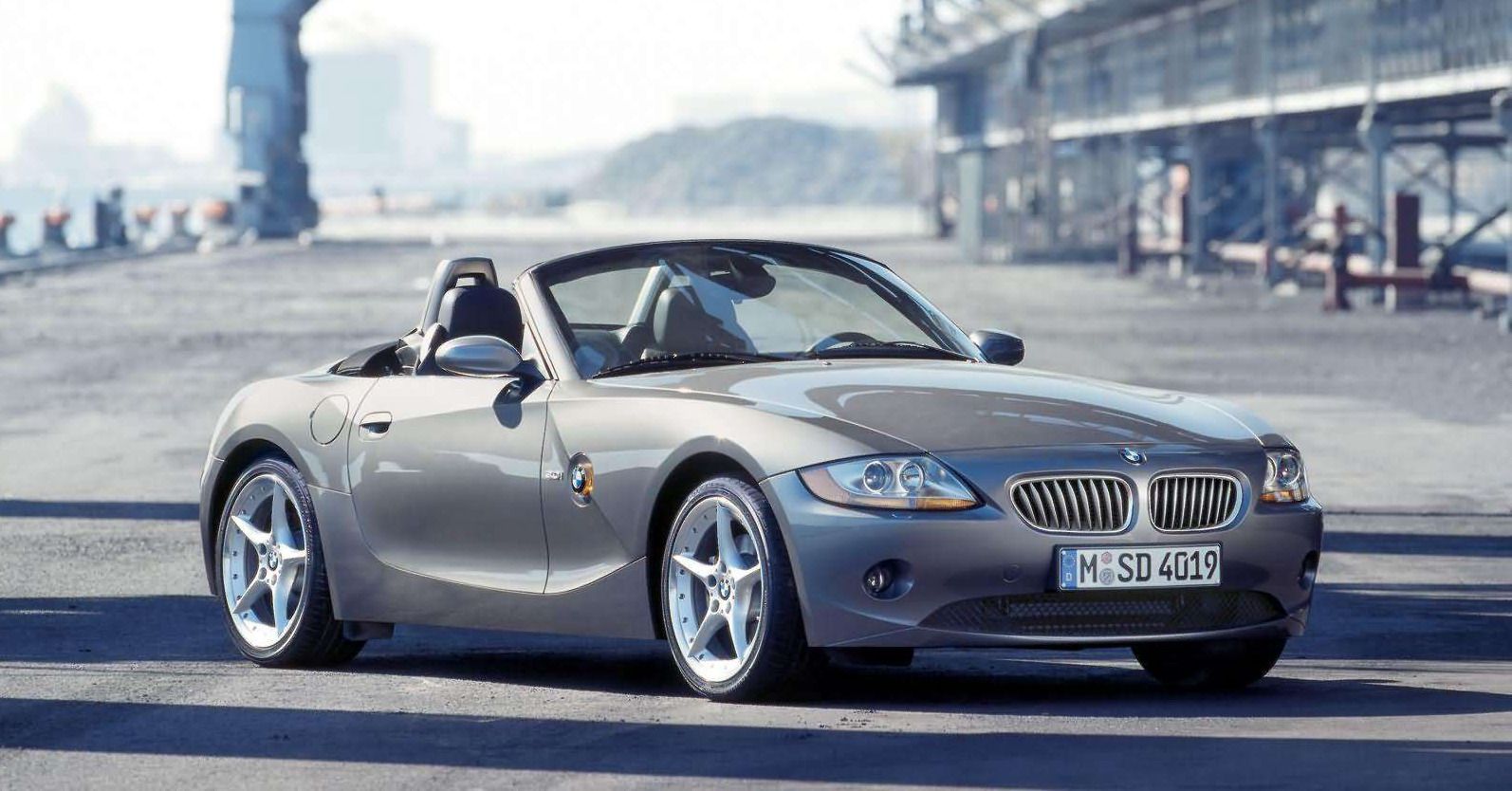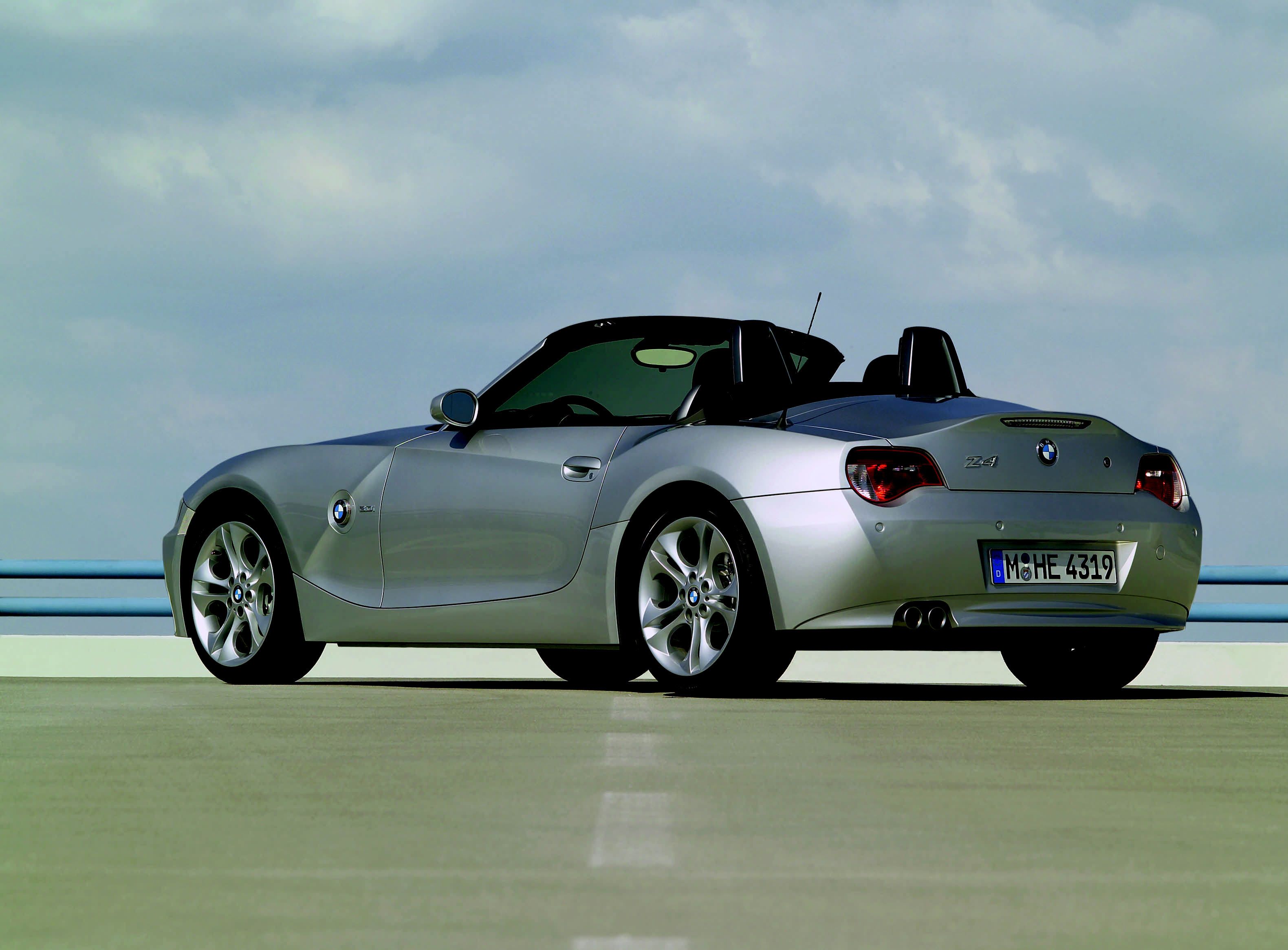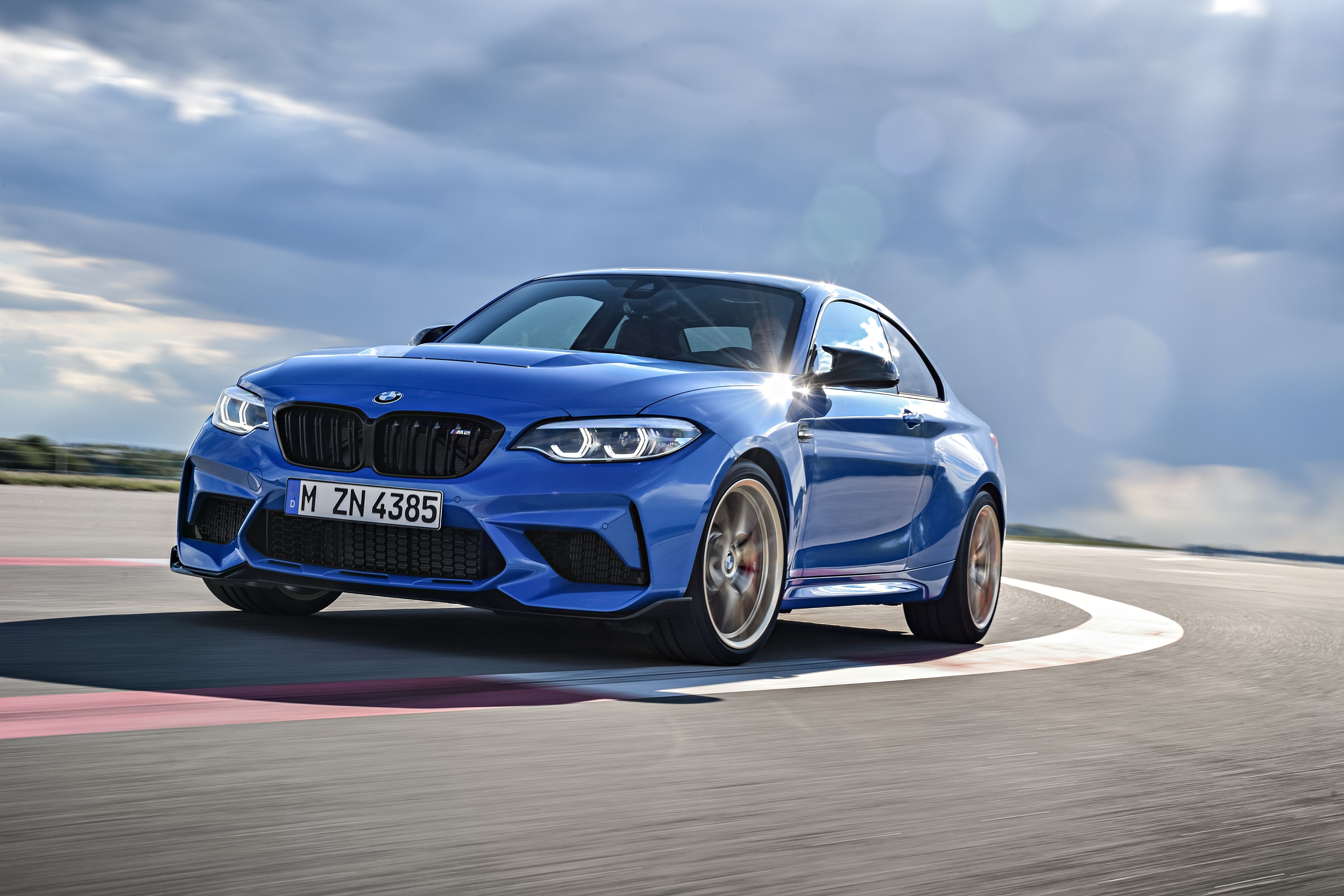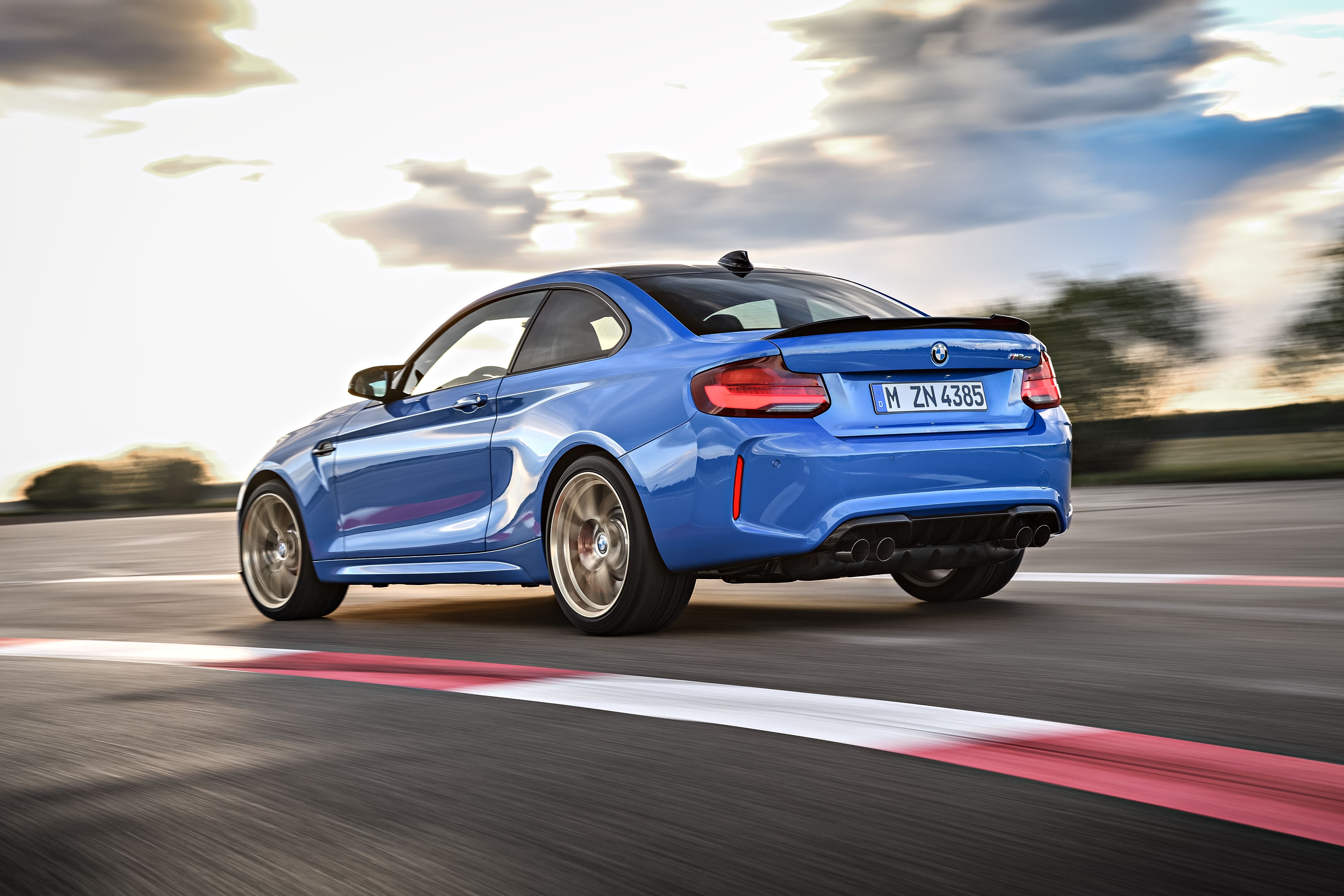BMWs are known as some of the purest driving machines that emphasize driving pleasure and engineering excellence over other things. However, in recent years, enthusiasts have been blaming BMW for diluting its core ethos in a bid to chase luxury and efficiency, but the biggest clincher for car enthusiasts has to be the fact that BMW has no manual transmission cars in its current portfolio, save for the M3 and M4. But, fear not, we have curated a list of the best manual transmission BMWs of all time to help you relish and even find your next truly analog Beemer.
E30 BMW M3 - Five-Speed Manual/ Five-Speed Dog-leg Manual
Produced between 1986 and 1991, the E30 M3 was not just the starting point for one of the most iconic sports saloon lineups of all time, but it also comes from a time when Germans were engaged in a game of precision engineering and wits, trying to outsmart each other every step of the way.
The E30 M3 was powered by BMW's legendary 195-horsepower, 2.3-liter naturally aspirated inline-four engine that revs to 7,200 rpm. The engine was indirectly derived from the company's F1 efforts, and despite that, they continue to be regarded as one of the most reliable "M" engines of all time. It wasn't the only engine, later "Sports Evolution" models, native to the European market, came with more powerful 2.5-liter engines that made 238 horsepower and 177 pound-feet of torque. But regardless, all cars came with a slick-shifting five-speed manual. Some markets also got the highly acclaimed dogleg manual that was perfect for track use.
The E30 M3 is well known for racking up the highest number of wins in touring car history, and that is down to its supple balance that continues to put modern cars to shame to this day. Values have skyrocketed over the last decade, which is down to their relative rarity. If you seek a well-maintained example, expect to shell out anywhere between $60,000 and $80,000 for a well-maintained example.
BMW E30 M3
|
Engine |
2.3-liter inline-four |
|---|---|
|
Horsepower |
238 horses |
|
Torque |
177 pound-feet |
|
Transmission |
Five-speed manual/ Five-Speed dog-leg manual |
|
Drive Layout |
Rear-wheel-drive |
|
0-60 mph |
6.3-seconds |
|
Top Speed |
145 mph |
E46 BMW M3 - Six-speed Manual/ Six-speed SMG-II
In production from 2000 to 2006, the E46 M3 is one of the most successful M3s of all time and is widely regarded as one of the last pure M3s since it was the last time BMW put in a naturally aspirated inline-six engine in an M3. Speaking of the engine, the S54 straight-six, that powered other M-division cars like the Z3 M and Z4 M roadsters, was a masterpiece. In this application, it was good for 338 horsepower and 269 pound-feet of torque and was mated to either a well-regarded Getrag 420G six-speed manual or an SMG-II six-speed automated manual. Without a doubt, the Getrag unit was the pick of the two.
Available in both coupe and convertible body styles, the E46 was a significant step-up from its predecessor, the E36, thanks to its all-new chassis which was composed of extensive amounts of aluminum for improved power-to-weight ratio and torsional rigidity. As a result, the E46 was capable of hitting 60 mph from a standstill in just 5.1 seconds, and the coupe could pull an impressive 0.89 g on the skidpad, closely followed by the convertible at 0.81 g. BMW made a total of 85,766 E46 M3s during the six-year production run, out of which 56,133 were coupes and 29,633 were convertibles. You can find well-maintained examples in the $18,000 to $25,000 range.
BMW E46 M3
|
Engine |
3.2-liter inline-six |
|---|---|
|
Horsepower |
338 horses |
|
Torque |
269 pound-feet |
|
Transmission |
Six-speed manual/ Six-speed SMG-II |
|
Drive Layout |
Rear-wheel-drive |
|
0-60 mph |
5.0-seconds |
|
Top Speed |
174 mph |
E39 BMW M5 - Six-Speed Manual
The E39 M5, produced between 1998 and 2003, is yet another modern-day automotive icon that is widely regarded by many as the best M5 of all time and has become the default benchmark against which all sports saloons are measured. The E39 M5 was significant for BMW and the M-division for introducing a lot of "firsts" that would go on to define all M5s that came after it. Powered by the S62 4.9-liter V-8, this was the first V-8-powered M-car that made nearly 400 horsepower and 368 pound-feet of torque which helped it get to 60 mph in just 4.8 seconds. More importantly, this was the last M5 that exclusively came mated to a six-speed manual which was a Getrag sourced unit called the 420G. It even came with a clutch-based mechanical limited-slip differential that allowed for 25-percent slip.
The M5 even managed to set new benchmarks in driver comfort and usability, thanks to an all-new chassis that was largely made out of aluminum to reduce weight and increase torsional rigidity. Combined with the use of an all-new multi-link suspension, the new M5 was not just a step up in driver involvement, it was also one of the best GT cars of its time, perfect for those cross country road trips. As is the case with most old-school analog Beamers, the E39 M5 is rapidly rising in value, so expect to pay anywhere between $20,000 to $30,000 for a decent, high-mileage example. Models in pristine condition and with low mileage should set you back by over $70,000
BMW E39 M5
|
Engine |
4.9-liter V-8 |
|---|---|
|
Horsepower |
394 horses |
|
Torque |
368 pound-feet |
|
Transmission |
Six-speed manual |
|
Drive Layout |
Rear-wheel-drive |
|
0-60 mph |
4.8-seconds |
|
Top Speed |
155 mph (limited) |
BMW 850 CSi - Six-Speed Manual
The E31 8 Series was BMW's flagship coupe produced between 1990 and 1999, and the range comprised a wide range of variants available with a selection of engine options, which included two V-8s and four V-12s. The range-topping 8 Series was the 850 CSi, powered by a 5.6-liter V-12, and the setup came mated to one of the first six-speed manuals of its day, which was the only transmission offered with the 850 CSi.
Not only was the 850 CSi the most powerful of the 8 Series bunch with 375 horsepower and 406 pound-feet of torque, but it was also a heavily reworked version of the S70 V-12 that also went on to power the McLaren F1. Even the design of the 8 Series was somewhat of a revolution for the company courtesy of its wedge-shaped design with pop-up headlights. A fitting evolution to the E28 6 Series, it was also one of the first cars to utilize CAD designs, as a result, it had one of the lowest drag coefficients at 0.29 of any production car, even lower than supercars like the Lamborghini Diablo.
But, stringent emission laws meant that BMW had to kill the 850 CSi in 1996. However, the rest of the lineup stayed in production until late 1999, which makes the 850 CSi a truly rare and unique beast in the BMW lineage with only 1,510 examples ever produced. As a result, these cars are now fetching anywhere between $100,000 and $150,000.
BMW 850 CSi
|
Engine |
5.6-liter V-12 |
|---|---|
|
Horsepower |
375 horses |
|
Torque |
406 pound-feet |
|
Transmission |
Six-speed manual |
|
Drive Layout |
Rear-wheel-drive |
|
0-60 mph |
4.8-seconds |
|
Top Speed |
155 mph (limited) |
E92 BMW M3 - Six-speed Manual
The E92 M3 is yet another icon that, at the time, received multiple accolades from journalists and experts from around the globe. It was a stark departure from the previous M3s and was, without a doubt, one of the most technologically advanced cars of the time. Not only was it the first standard M3 to have a V-8 engine (except the very limited E46 M3 GTR), but it was also the first BMW to come with a Getrag sourced seven-speed dual-clutch transmission. Even though the DCT was a smidge faster, the old school six-speed offered more in terms of driver engagement, and as a result, continues to be the pick of the lot.
Power figures for this naturally aspirated engine stood at 414 horsepower and 295 pound-feet of torque, which lent it an impressive 0-60 mph figure of just 4.6 seconds with the DCT transmission while the manual achieved it in 4.8 seconds. Available in four-door sedan, coupe, and convertible body styles, reviewers around the world called the M3 the most complete car in the world and the sales figures tell a similar story. In production from 2007 to 2013, a total of 40,092 coupés, 16,219 convertibles, and 9,674 sedans were sold the world over, and its excellence continues to win hearts to date, which is why well-maintained examples fetch anywhere between $30K and $60K.
BMW E92 M3
|
Engine |
4.0-liter V-8 |
|
Horsepower |
414 horses |
|
Torque |
296 pound-feet |
|
Transmission |
Seven-speed M-DCT/ Six-speed manual |
|
Drive Layout |
Rear-wheel-drive |
|
0-60 mph |
4.4/ 4.6 seconds |
|
Top Speed |
155 mph (limited) |
BMW Z8 - Five-Speed manual
The BMW Z8 hails from BMW's halo lineup of roadsters that takes inspiration from the BMW 507, which was a true design icon of the 50s. It also succeeded the quirky and space-age BMW Z1 roadster in the company's lineup. Produced between 2000 and 2003 and based on the Z07 concept car, the Z8 had a short lifespan, and that was partly due to its exorbitant price tag of $128,000. But, another reason for its poor sales was because people did not understand what this roadster was all about. However, the few buyers who bought these did get their money's worth.
The Z8 featured an all-aluminum body and was powered by a state-of-the-art 4.9-liter V-8, known as the S62, that pumped out 395 horsepower and 369 pound-feet of torque. It was specially developed by BMW Motorsport and was shared with the E39 M5 which lends it respectable performance stats like a 0-60 mph time of just around 4.2 seconds and a top speed of 155 mph, although delimited, it was capable of achieving an estimated top speed of 180 mph.
The old-school character of the car was enhanced by its five-speed manual gearbox which, thanks to its transaxle layout, gave this car a 50-50 weight distribution. The Z8 was not exactly a sales success and just 5,703 cars were produced globally. As a result, prices for used Z8s have reached stratospheric heights in recent years. So, if you are on the lookout for one, expect to pay anywhere between $180,000 to $200,000 for decent examples, while show quality low-mileage examples command upwards of $400,000.
BMW Z8
|
Engine |
4.9-liter V-8 |
|---|---|
|
Horsepower |
395 horses |
|
Torque |
369 pound-feet |
|
Transmission |
Six-speed manual |
|
Drive Layout |
Rear-wheel-drive |
|
0-60 mph |
4.2 seconds |
|
Top Speed |
155 mph (limited)/ 180 mph (delimited) |
BMW 1M Coupe - Six-speed manual
The BMW 1 Series M Coupe or commonly known as 1M, is best described as one of the hottest M cars at the moment. Even though it's based on the E82 1 Series coupe, it shares most of its M-division parts and pedigree with the E46 M3 and comes powered by the N54 twin-power turbo inline-six, which was the brand's second turbocharged engine ever. As a result, it made a potent 335 horsepower and 332 pound-feet of torque and an over-boost feature that could momentarily take the peak torque output to 369 pound-feet. It was one of the lightest M-division cars, weighing in at just 3,296 pounds. The 1M was a true pocket-rocket that was capable of hitting 60 mph in just 4.8 seconds.
The only transmission available with the car was a Getrag sourced six-speed manual that sent power to the rear wheels. The combination of its short wheelbase and RWD drivetrain meant it was one of the most playful cars of its day, putting Caymans and even the bigger M3 to shame. The car was an instant hit, with automotive magazines across the globe awarding it the prestigious "Car of the Year" award. As a result, BMW ended up producing 6,309 cars instead of just 2,700 copies initially planned for production. As you might have guessed, the values for this hot little M-division masterpiece are already sky-high; so, expect to pay anywhere between $80,000 for a high-milage example, and well over $120,000 for something closer to showroom quality.
BMW 1M Coupe
|
Engine |
3.0-liter, turbocharged inline-six |
|---|---|
|
Horsepower |
335 horses |
|
Torque |
369 pound-feet |
|
Transmission |
Six-speed manual |
|
Drive Layout |
Rear-wheel-drive |
|
0-60 mph |
4.8-seconds |
|
Top Speed |
155 mph (limited) |
E85/86 BMW Z4 M - Six-speed manual
The Z4 range was BMW's aim at capturing the two-seater roadster domain at a relatively affordable price point as a follow up to the Z3, to take the fight to the popular Porsche Boxster. In 2006, as part of a facelift, BMW launched the full-fat Z4 M alongside a coupe version of the Z4, code-named the E86, to give enthusiasts a true two-seater sports car experience - something that was lacking from the brand's portfolio at the time.
The Z4 M was a handpicked selection of the best M parts at BMWs disposal. Powered by the S54 straight-six engine that it shared with the E46 M3, in this application, the mill produced around 330 horsepower and 262 pound-feet of torque. It was mated exclusively to a ZF sourced six-speed manual, which lends this car an impressive 0-60 mph figure of 4.8 seconds and a top speed limited to 155 mph. The Z4 M also utilized an old-school hydraulic steering rack, unlike the rest of the Z4 range. In addition, the coupe also featured the M3 CSL's steering rack, and both versions also borrowed the rear axle and brake assembly from the M3 CSL, making it a true driving machine as advertised by BMW: full of feel and feedback. This continues to be a rather underrated machine in the world of old M-powered BMWs. As a result, values have stayed more or less stagnant so you could find a well-looked-after example in the $30,000 to $40,000 range.
BMW E85/86 Z4 M
|
Engine |
3.2-liter inline-six |
|---|---|
|
Horsepower |
338 horses |
|
Torque |
296 pound-feet |
|
Transmission |
Six-speed manual |
|
Drive Layout |
Rear-wheel-drive |
|
0-60 mph |
4.8-seconds |
|
Top Speed |
155 mph (limited) |
E60 BMW M5 - Six-speed Manual/ Six-speed SMG-III
The E60 M5 produced between 2005 and 2010 was a stark departure from the 5 Series BMWs of the past, and that's what makes it so special. Upon introduction, it was met with mixed reactions, largely due to its polarizing design. But, the major draw that people had towards this car was the amount of technology that BMW managed to cram into this car, especially the M5, which was powered by one of the most technologically advanced motorsport-derived engines of all time - the 5.0-liter S85 V-10. It was a derivative of the F1 engines used by the BMW-Sauber's team at the time.
The gearbox, too, was a highly advanced robotized single-clutch unit called the SMG-III. Though it was a very dim-witted gearbox, lucky for enthusiasts, BMW did offer the option of a ZF-sourced six-speed manual which is, without question, the gearbox to be had to utilize the full potential of the glorious V-10. Power figures stood at 500 horsepower and 384 pound-feet of torque, and the engine revved to 8,500 rpm, arguably making it one of the best sounding engines of all time. But, the advanced nature of the engine also meant it was prone to catastrophic breakdowns, which combined with the fact that BMW made 19,523 M5 sedans, means you can get your hands on a decent example for as low as $20,000.
BMW E60 M5
|
Engine |
5.0-liter V-10 |
|---|---|
|
Horsepower |
500 horses |
|
Torque |
384 pound-feet |
|
Transmission |
Six-speed manual/ Six-speed SMG-III |
|
Drive Layout |
Rear-wheel-drive |
|
0-60 mph |
4.7 seconds |
|
Top Speed |
155 mph (limited) 190 mph (delimited) |
BMW M2 CS - Six-speed manual
The BWW M2 range, produced between 2015 and 2021, is considered a direct descendent of the rare yet iconic BMW 1M coupe and one of the best M-cars of the modern era. The M2 range saw quite a few iterations over time, which include the M2 Performance edition and the M2 Competition. But, we will talk about the last, and arguably the finest version of the range, the M2 CS.
The M2 CS was the track-focused version of the M2, powered by the S55 turbocharged inline-six, a more powerful version of the same engine that powers the F82 M4 Competition. In this application, it produces 444 horsepower and 406 pound-feet of torque, and the power is channeled to the rear wheels via either a ZF-sourced six-speed manual or a seven-speed DCT. Even though the DCT is the quicker transmission with a faster 0-60 mph time of 3.8 seconds as opposed to the six-speed manual's 4.0 seconds, the stick shifter is without a doubt the more desirable of the two, significantly improving driver involvement, which is exactly what people seek from a BMW sports car.
The M2 CS carries over the M Performance Brakes option, with rotors and calipers from the M2 Competition. The combination with the adaptive suspension and electronically locking differential improved the handling characteristics of this machine significantly over the standard M2. With just 2,200 copies produced globally, it is one of the finest BMWs of the 21st century, and without a doubt, it is destined to become a highly sought-after future collectible with prices already exceeding the $80,000 mark in the used car market.
BMW M2 CS
|
Engine |
3.0-liter turbocharged inline-six |
|---|---|
|
Horsepower |
444 horses |
|
Torque |
406 pound-feet |
|
Transmission |
Six-speed manual/ Seven-speed DCT |
|
Drive Layout |
Rear-wheel-drive |
|
0-60 mph |
3.8 seconds |
|
Top Speed |
155 mph (limited) |

